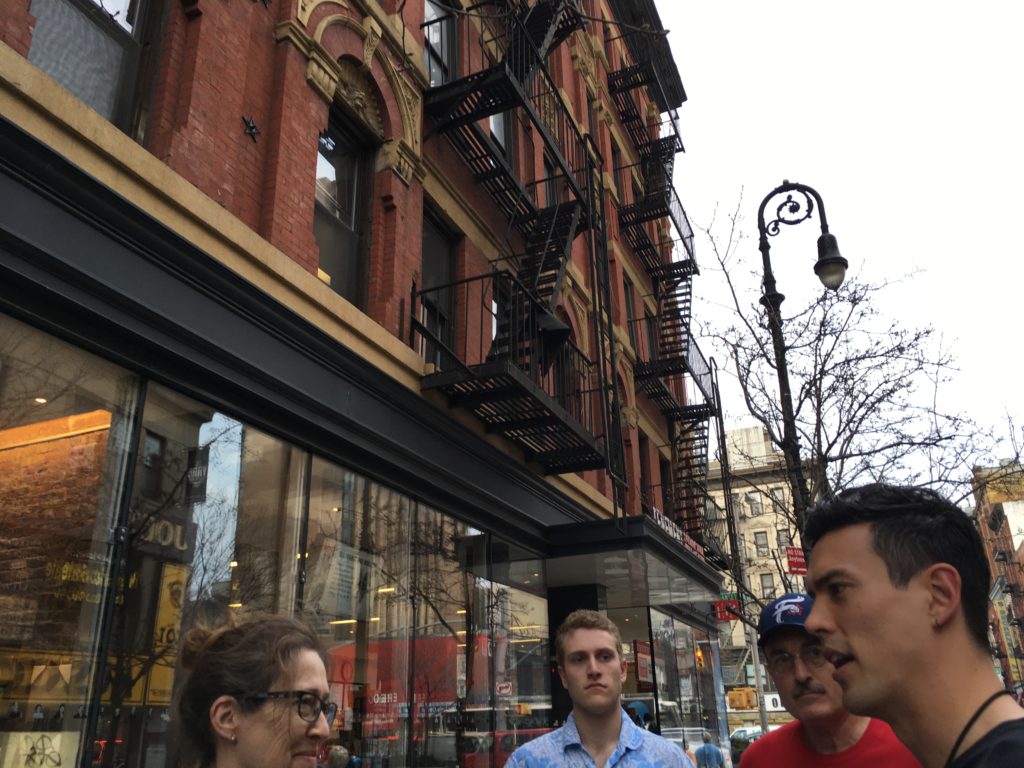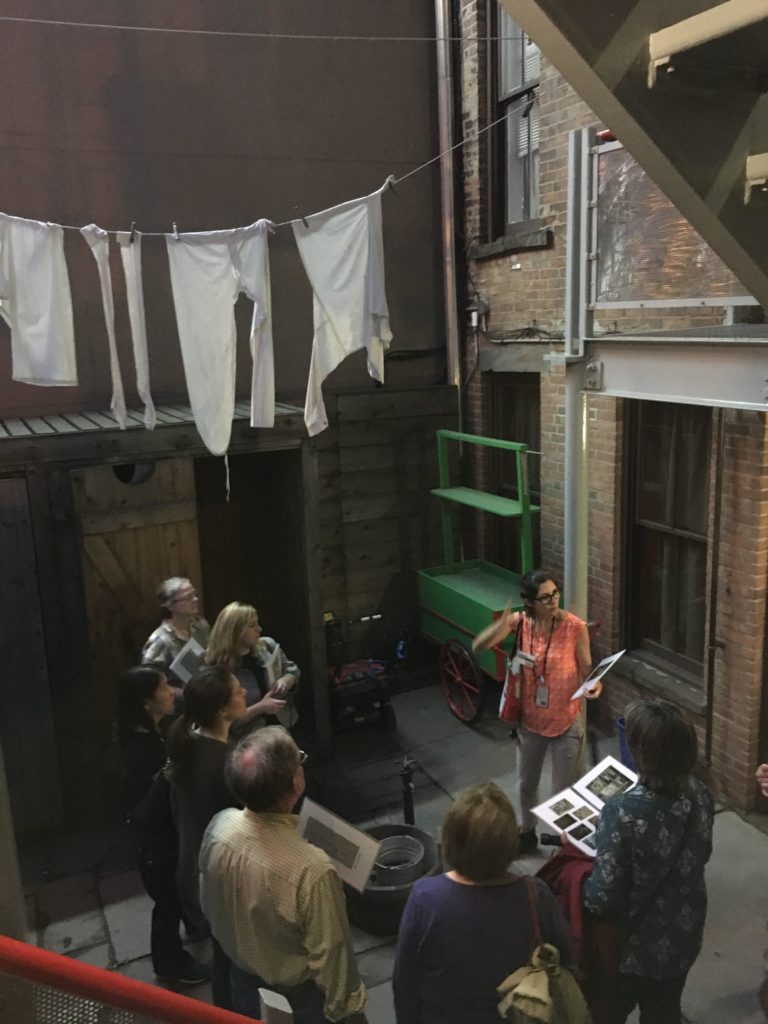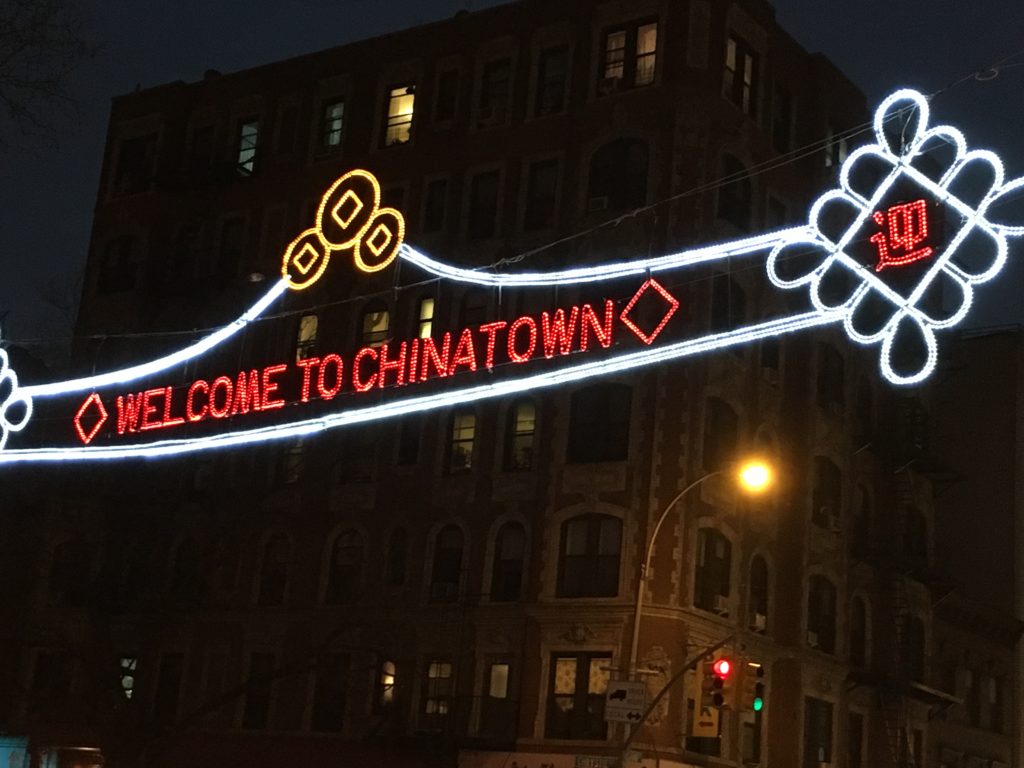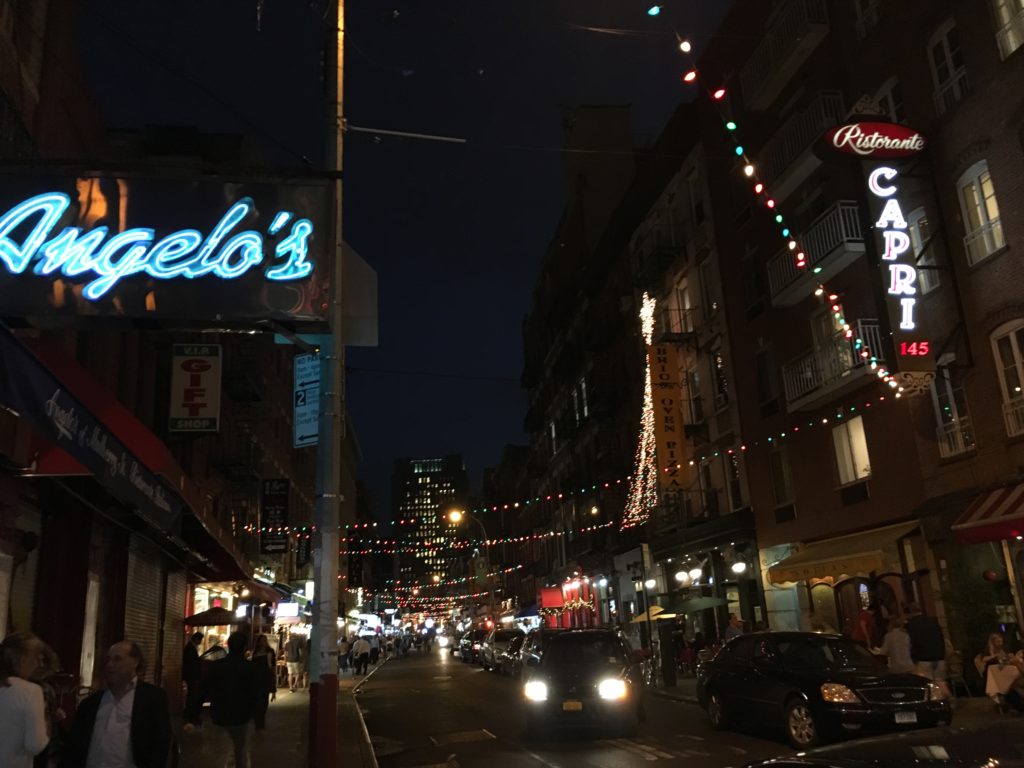I took my daughter to the Tenement Museum on our last visit to NYC. Why? Because it was in all the guide books and because it was one of the few things I’d never done before.
It was so worth it. Our guide Fielding Kong was excellent. We learned about the building was built around 1863. Five floors, no elevator and no hallway lighting. No bathrooms, no sinks. You had to use one of 4 privies in the back – and these were shared by visitors to the saloon as well.

In the hallway, we saw a tin roof and painting of a house with burlap wallpaper. Fielding explained that after 1901, the tenant laws changed and changes had to be made. One was lighting in the hallways and stairs – which originally was gas. He showed us a gas line. Also, the spruced up the place by putting the tin ceiling. It looks fancy but was mass-produced, as well as the burlap wallpaper which was made to look like leather. The paintings of a pastoral scene where also mass-produced and maybe put there to let tenants remember their homeland.
Next, he took us to an empty apartment on the second floor. The window was open, horns were blaring and a breeze was fluttered with the wind. This is how it would have been 100 years ago with no heating and air. We could look out the window and see the four privies. Also, we could see multiple layers of wallpaper and floors. In 1934, the tenement laws changed again whereby they would have to put in metal stairs. Since the original stairs were made of mahogany, it was too expensive to change. It was easier just to close up the top floors and rent out the storefront space and so they did.
We walked to an apartment toward the front of the building, passing a bedroom and entering a kitchen. Decorated with beautiful lace, we noticed there was no sink. Fielding told us this was the apartment of Julius and Nathalie Gumpertz. They both came over from Germany and met here. They lived here with their 2 daughters around 1870.
In the Census records, Julius was a cabinet-maker. Nathalie stayed at home with the children. It wasn’t easy as Julius probably went to work at 7 a.m. He would need coffee. Nathalie would have to walk down the stairs in the dark to get coat from the basement for the stove. The stove would take at least an hour to heat before preparing his coffee. Also, think about changing diapers. They weren’t disposable so you would have to soak in water and bring it back the flights of stairs to dump. You just didn’t throw it out the window – especially since it was at the front of the building.
Unfortunately, Census records show that the next year Julius didn’t have a job, then the next year, he did, but it wasn’t as highly skilled of a job. In 1873, no job again. One day, he just didn’t come home. We entered the front parlor with pretty wallpaper and reminded one of the tourists of a “Parisian Boudoir.” Nathalie had 3 children by this time and she started making dresses out of her home. The dresses were rather plain, not poofy like current styles so they were probably made for women in the neighborhood that worked and wanted to look respectable. This went on for another 10 years when Nathalie found out her father-in-law died and left them $600 – a fortune back then. To claim it, she had to have Julius declared legally dead. Court records show that the landlord, neighbors, clients and even her daughters testified in court. She got her money and the family moved to the Upper East Side.
The next apartment was for the Baldizzi family. The kitchen is different. It has a sink, linoleum floors, no lace, but lots of board games. The head guy fought in WWI for the Axis powers and met the wife by selling eggs to her parents. They married and for whatever reason, he came over first in 1923. Rosaria came in 1924 illegally since quotas were established. Nobody knows how she did it, but it could have been Canada and coming down. They had a son and daughter, Josephine. In 1988, Josephine contacted the museum and remembered living here as a child.
Fielding played a taped audio of her recollections. She remembered playing games at the kitchen table with her father. Her mother cooked all the time and cried a lot. HE was a cabinetmaker, but apparently was out of a job many times (hence the wife’s tears). She went to work for a factory. FDR passed the NY Relief Bill which provided food to these families – as long as the wife wasn’t working. She had to get the children to lie about that or they wouldn’t have gotten assistance. When he became president and started the WPA, the father got a good job and they were able to move out. In the parlor above the dresser is a picture of FDR.
As we departed, we saw the back courtyard of the building and the privies.

The Hard Times tour was informative and one of my favorite tours in NYC. For more information, a list of tours and prices, see the Tenement Museum.
Little Italy and Chinatown
Afterward, we walked through Little Italy and Chinatown. You can spend as little or as much time here. Since we weren’t hungry yet, we just walked by. However, on previous visits, I have spent time wandering the stores for the perfect Oolong tea.

Chinatown 
Little Italy


